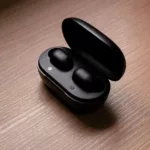
Wireless technologies of Internet of Things (IoT) is the concept of connecting physical objects to the Internet to give them the ability to collect and transfer data over a network without human intervention. IoT has been labeled as the next “Industrial Revolution” owing to how it will change how people live and how businesses transact. The revolution has certainly begun. Gartner, Inc. has estimated that 8.4 billion connected “things” will be in use across the globe in 2017. This figure is expected to rise to 26 billion in the year 2020. This year, the spending on IoT is expected to reach about $2trillon.
IoT is composed of three core components; things, the Internet, and connectivity. Things could be anything, a fridge, heart monitor, automobile or light bulbs. Connectivity is achieved through various wireless networks which allow devices to communicate with each other and send to the web. There are a couple of different wireless technologies that can be implemented in physical products to achieve IoT and Machine to Machine communication. Discussed below are 5 types of wireless technology for the IoT to be achieved.
-
Zigbee
ZigBee is an open global standard that utilizes 2.4 GHz spectrum for communication. It offers a maximum range of 100 meters. It is specially designed for Machine to Machine communication. Furthermore, it consumes less power and is inexpensive to run, hence is ideal for industrial applications. ZigBee has low latency and low duty circle enabling physical objects to save battery life. Thus, it is ideal for applications that require low data rates and less frequent data transfers. This protocol offers 128-bit AES encryption to protect data relayed within the network. To ensure uniformity and enhance connectivity, ZigBee Alliance has recently standardized the network to ensure that unlike previously, all ZigBee devices are capable of talking to all the other ZigBee devices.
-
Wi-Fi
Wi-Fi utilizes radio frequencies (RF) to allow devices to communicate with each other. It is technically referred to as the IEEE 802.11 standard. Wi-Fi is one of the most popular wireless technology today. It is often used to connect Internet routers to PC, tablets, and smartphones. It can also be used to connect any other two devices together. Information is first converted into digital data packets before being transmitted to devices connected to the network. It has a transmission range of up to 100 meters.
Wi-Fi can use both 2.4 GHz UHF and 5GHz SHF ISM frequency bands. This wireless technologies encrypts data to ensure secure communication between devices. It follows TCI/IP protocols. A wireless router configures using a PC and connected to an Ethernet or fiber optic cable is used to transmit and receive information from devices. It is Inexpensive, flexible, easy to configure and offers a very high data transfer rate. Thus, it’s ideal for mobile devices, office networking, medical equipment and smart devices.
-
Bluetooth
Bluetooth is an equally popular wireless technology used in personal devices, industrial equipment, and medical applications. Like Wi-Fi and ZigBee, it uses the 2.4GHz frequency band. It is used to transfer data over short distances. It is commonly used to connect a phone and tablet devices with each other. It’s also common in many speaker systems. It was originally standardized as IEE 802.15.1 by IEEE, this standard is no longer maintained. It offers a connectivity range of 10 meters.
Bluetooth Low Energy (BLE) was first introduced in 2006 by Nokia. It has since gained a lot of popularity. In 2010, it was included as a Bluetooth standard It consumes less power than standard Bluetooth and is often used in devices like fitness trackers that require wireless data transmission that does not heavily compromise the battery power.
Bluetooth is easy to embed into devices, hence is an ideal wireless technologies headset and wearables. It is also suitable for wireless healthcare systems.
-
WiMAX
Worldwide Interoperability for Microwave Access (WiMAX) technology was once used by mobile carriers to deliver data to consumers. It allows for data to be transmitted at rates of between 30 and 40 Mbps Mobile carriers have since moved to LTE 4G which is, of course, faster than WiMAX. This wireless technology can be used indoors and outdoors.
-
LoRa
LoRa is a wireless technology specifically designed for IoT. It is yet to gain popularity amongst manufacturers and consumers. It is intended to connect between devices utilizing a centralized server. Encrypted data are transmitted to devices using different frequency bands and data rates. It utilizes I GHz spectrum for communication. It has been standardized as IEEE 802.15.4 g.
LoRa uses several layers of encryption to secure the network and accompanying applications. It offers a connectivity range of 10-20 KM It is ideal for smart homes, smart devices, and industrial automation



















